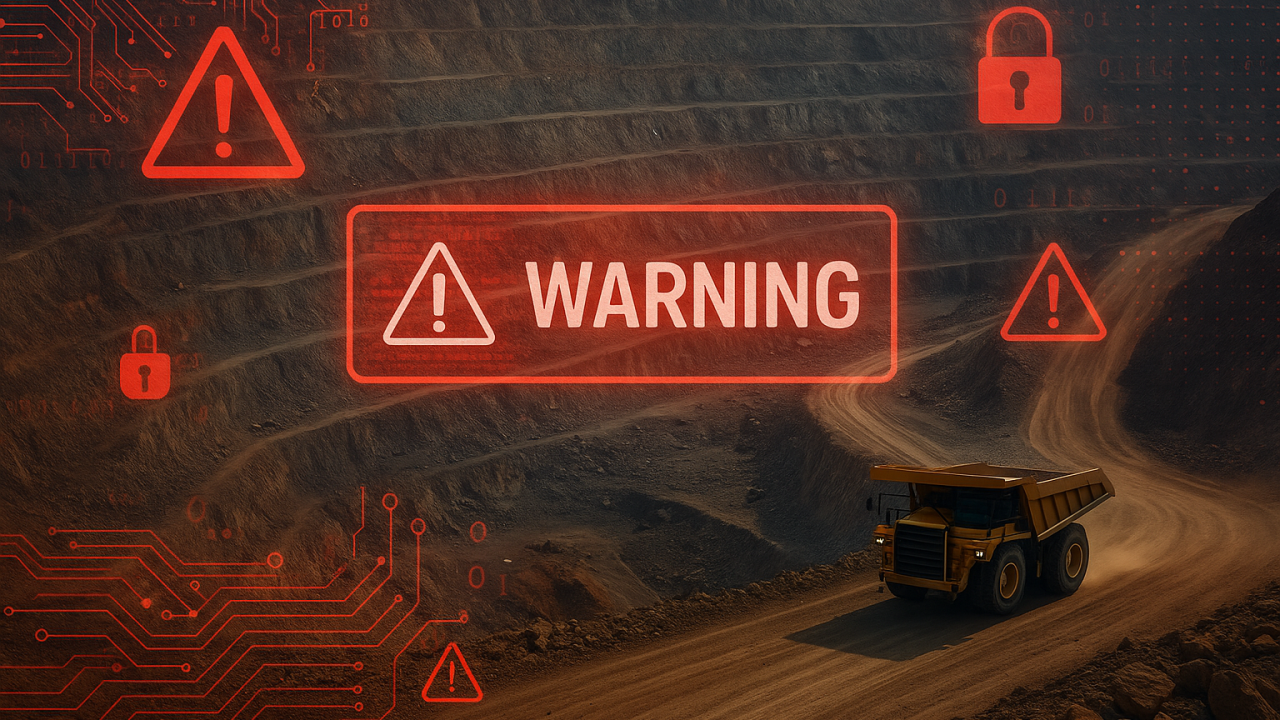Mining and Metals Incidents More Than Double in the First Quarter of 2025
At the Mining and Metals ISAC, we monitor cyber incidents and track trends within the mining and metals sector. Compared to last year, incidents have...
3 min read
Cherie Burgett : Mar 10, 2025 12:00:00 AM

If you work in cybersecurity in mining, it is easy to forget why we do what we do. We are not in the cybersecurity business; we are not merely securing systems, trying to stop ransomware attacks, and creating cyber awareness programs. We are securing the business. Our primary focus is to ensure safe operations and production. However, it is easy to lose sight of what it is we do and why it is essential. We all know that most of our products come from the ground; the most obvious are the things made of metal, our cars, our laptops, and phones, but we often take for granted where everything comes from, the chemicals needed in the manufacturing process, strengthening agents and alloys, and many of the people who work in cybersecurity in mining haven’t taken much stock into what it is they are securing,
If you’ve watched the news, attended a mining conference recently, or even read the press releases from many mining companies, you will have noticed everyone is talking about the importance of critical minerals, even making it into the speeches of our world leaders. The US and Canadian governments have invested in joint mining operations to secure access and minimize disruptions to their supply chains. The most recent investment came just last year, with the two countries investing $35M into a project in the Yukon to secure access to Tungsten and reduce reliance on China for those minerals. CBC News
Critical minerals are the ones we cannot live without in our modern world. They are used in medical devices, renewable energy, batteries, and national defence.
In 2020, during the pandemic, the world was given a crash course in supply chains, and much light was shed on how fragile it can be. This led to a re-evaluation of supply chains and a motivation to update the critical mineral list, first created by the US in 2018. The list now includes over 50 minerals. Each country maintains its own list of essential minerals that would cause supply chain disruptions. They include minerals such as aluminum, arsenic, cobalt, graphite, lithium, magnesium, manganese, potash, titanium, tin, and zinc.

(image geology.com)
Rare Earth Elements are a group of 17 chemical elements (metals) that share a lot of similar properties, and you can find them clustered together on the periodic table. Rare Earth Elements have received considerable attention recently, with many universities and companies funding research into new and innovative ways to extract REEs. However, Rare Earth Elements are not rare in the sense of scarcity; they are rare because they are difficult to extract. The demand for REEs has grown exponentially over the past 20 years, with cell phones responsible for a large portion of that demand. Geology.com
Australia’s strategy includes a more targeted approach to critical minerals, with strategic investments domestically and the establishment of reliable international trade partnerships. Identifying mineral inputs to support prioritized technologies of national interest to Australia. Critical Minerals Strategy 2023–2030
Over the past few years, the US Department of Defence has been seeking out mining projects to invest in, looking to its northern neighbour and engaging in joint operations in Canada to secure Titanium. A move that has not happened in 74 years, not since World War 2, when access to minerals became scarce.
The US Critical Mineral List has been updated to include 50 minerals that must be secured through foreign trade and domestic investment. Canada is the US's largest producer and source of uranium, nickel, and aluminum.
Canada maintains a list of 35 critical minerals, including Potash, which many countries have yet to add to their list. Potash is critical to agriculture and global food security.
While countries recognize the importance of critical minerals in achieving their sustainability and energy goals, supporting the defence industry is the primary driver for securing access to these minerals.
Placing tariffs on many of the minerals that the US imports from Canada undermines its critical minerals strategy.
“As the United States races to reduce its reliance on China for minerals vital for national, economic, and energy security, tariffs with Canada may drastically undermine these efforts. Canada is the biggest source of the United States mineral imports, providing key sources of uranium, aluminum, nickel, steel copper, and niobium. To put it into perspective, in 2023, Canada accounted for $47 billion of United States mineral imports. China followed with $28.3 billion. The consequences of tariffs would be particularly profound for the defense industry, nuclear energy, and heavy manufacturing. A 25 percent tariff on Canadian mineral imports could cost U.S. off-takers an additional $11.75 billion—a figure that would increase as base metal and uranium prices recover.” Canadian Tariffs Will Undermine U.S. Minerals Security
With global interest in critical minerals and the geopolitical race to secure them, there is a sharper lens on the mining sector than we may be used to. The mining sector, in general, is used to being taken for granted and ignored; we, as defenders, have enjoyed operating under the radar. However, with increased awareness that this sector exists and is critical to our supply chains and national defence, it is not surprising that threat actors may also get that memo.

At the Mining and Metals ISAC, we monitor cyber incidents and track trends within the mining and metals sector. Compared to last year, incidents have...

This article will be the first of a series on how centuries-old techniques in interpretation – Hermeneutics can be used to interpret information to...

What does a Greek god, a German philosopher, and a Museum Curator have to teach us about Cyber Threat Intelligence?